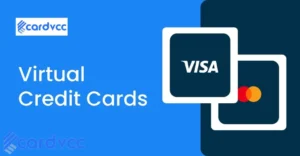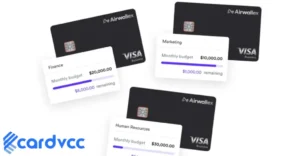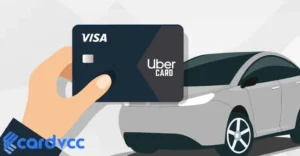Credit card companies charge interest when you carry a balance. This means you didn’t pay off your full statement by the due date.

Interest can add up fast, so it’s important to understand when it kicks in. Understanding when a credit card company charges interest can help you manage your finances better. If you know the rules, you can avoid extra costs. Credit card interest rates are often high, making your debt grow quickly.
Paying off your balance each month can save you money. This blog will explain how interest works and when it starts. By knowing these details, you can make smarter choices with your credit card. Stay tuned to learn more about avoiding unnecessary interest charges.
Interest-free Period
The interest-free period on a credit card is a valuable benefit. It allows cardholders to avoid paying interest on purchases. But how does it work? Let’s explore the details.
Grace Period Details
The grace period is the time between the end of your billing cycle and the payment due date. During this time, you won’t be charged interest on new purchases. Typically, the grace period lasts for 21 to 25 days.
Here’s an example:
| Billing Cycle End Date | Payment Due Date | Grace Period Length |
|---|---|---|
| October 1 | October 25 | 24 days |
How To Maximize It
To make the most of the interest-free period, pay your balance in full by the due date. This ensures no interest charges.
- Track your spending: Keep an eye on your purchases throughout the billing cycle.
- Set reminders: Use calendar alerts to remind you of the due date.
- Automate payments: Set up automatic payments to avoid missing the due date.
- Review statements: Check your monthly statements for any errors or fraudulent charges.
If you carry a balance, the interest-free period won’t apply. Interest starts accruing from the purchase date. Avoid carrying a balance to benefit from the grace period.
Billing Cycle Basics
Understanding your credit card’s billing cycle is essential. It helps you avoid unnecessary interest charges. A billing cycle is the period between statement dates.
Monthly Statement
At the end of each billing cycle, you receive a monthly statement. This statement shows all transactions made during the cycle. It includes purchases, payments, fees, and interest charges.
Review your statement carefully. Ensure all transactions are accurate. If you find any errors, report them immediately to your credit card company.
Payment Due Date
The payment due date is the date by which you must pay at least the minimum amount due. Paying the full balance by this date helps you avoid interest charges. If you pay only the minimum amount, interest will accrue on the remaining balance.
Setting up automatic payments can help you avoid missing due dates. Mark your calendar with the payment due date as a reminder.
Purchases
Purchases made with a credit card can be convenient. However, understanding when interest charges apply is crucial. This helps you manage your finances better.
When Interest Starts
Interest on purchases typically starts after the grace period. A grace period is the time between your purchase date and the due date of your bill. If you pay your full balance by the due date, you avoid interest charges.
Here’s a simplified example:
| Purchase Date | Due Date | Grace Period |
|---|---|---|
| 1st January | 25th January | 24 days |
Impact Of Partial Payments
Paying only a portion of your balance affects your interest. If you make a partial payment, interest accrues on the remaining balance. This interest starts accumulating from the date of the purchase.
For example:
- You spend $500 on 1st January.
- You pay $300 by the due date.
- Interest is charged on the remaining $200.
It’s beneficial to pay the full balance to avoid interest. This way, you keep your finances in check.
- Full payment = No interest
- Partial payment = Interest on the remaining balance
Understanding these details can help you use your credit card wisely. Always aim to pay off your balance in full.
Cash Advances
Cash Advances can be tempting when you need quick cash. However, they come with their own set of rules and costs. Understanding these can help you avoid unnecessary charges and debt.
Immediate Interest Charges
When you take a cash advance, the interest starts accumulating immediately. Unlike regular purchases, there is no grace period. This means you start paying interest from the moment you withdraw the cash.
This can quickly add up, making cash advances an expensive option. Banks usually charge a higher interest rate for cash advances compared to regular credit card purchases.
Higher Interest Rates
Cash advances often come with higher interest rates. These rates can be significantly higher than those for normal purchases. For example, if your credit card has a 15% APR for purchases, the rate for cash advances might be 25%.
It’s crucial to check your credit card agreement. This way, you can know exactly how much the interest rate is for cash advances. This information can help you make an informed decision.
| Transaction Type | Interest Rate | Grace Period |
|---|---|---|
| Regular Purchases | 15% | Yes |
| Cash Advances | 25% | No |
Cash advances can also include additional fees. These might be a flat fee or a percentage of the transaction amount. Always read the terms and conditions before opting for a cash advance.
Being aware of these costs can help you make better financial decisions. Avoid using cash advances unless necessary. This way, you can save money and avoid high-interest debt.

Balance Transfers
A balance transfer allows you to move debt from one credit card to another. Many people use balance transfers to take advantage of lower interest rates. Understanding how interest and fees work with balance transfers is important.
Transfer Fees
Most credit card companies charge a fee for balance transfers. This fee is usually a percentage of the amount you are transferring. Typically, it ranges from 3% to 5%. For example, if you transfer $1,000 and the fee is 3%, you will pay $30.
Some credit cards offer no-fee balance transfers, but these are rare. Always check the terms and conditions before making a balance transfer. The table below shows an example of typical fees.
| Transfer Amount | Fee Percentage | Fee Amount |
|---|---|---|
| $500 | 3% | $15 |
| $1,000 | 4% | $40 |
| $2,000 | 5% | $100 |
Interest On Transferred Balances
Credit card companies often offer a 0% APR on transferred balances for a limited time. This promotional period can last from six months to 18 months. During this time, you won’t pay any interest on the transferred amount.
After the promotional period ends, the regular APR will apply. This rate can be high, so try to pay off the balance before the period ends. Check the terms to see what the regular APR is.
Be aware that new purchases may still incur interest. Some cards apply payments to the transferred balance first, leaving new purchases to accumulate interest. It is essential to read the fine print and understand how payments are applied.
Promotional Rates
Credit card companies often offer promotional rates to attract new customers. These rates can be very enticing. They usually start with a low or 0% interest rate. This sounds like a great deal, right? But, there are some things you need to know.
Introductory Offers
Many credit cards come with introductory offers. These offers include a low interest rate for a set period. The period can be anywhere from six months to a year. During this time, you might not pay any interest on new purchases. This can save you a lot of money if you pay off your balance within this period.
Introductory offers can also apply to balance transfers. This means you can move debt from another card to the new card. You will then pay less interest on that debt during the promotional period. This can help you get out of debt faster.
When They Expire
Promotional rates do not last forever. They have an expiration date. When they expire, the interest rate goes back to the standard rate. This standard rate is often much higher. So, it is important to know when your promotional rate ends.
Check your credit card statement or terms and conditions. This will tell you when the promotional rate expires. Mark this date on your calendar. Make a plan to pay off your balance before this date. If not, you could end up paying a lot of interest.
| Type of Offer | Interest Rate | Duration |
|---|---|---|
| New Purchases | 0% – 5% | 6 – 12 months |
| Balance Transfers | 0% – 3% | 6 – 18 months |
Late Payments
Late payments on your credit card can be costly. When you miss a payment, the credit card company may charge interest. You might also face other penalties that increase your debt.
Understanding the consequences of late payments helps you avoid unnecessary costs.
Penalty Apr
Most credit card companies apply a Penalty APR when you miss a payment. The Penalty APR is a higher interest rate. It can be up to 29.99% or more.
Once the Penalty APR is applied, all new purchases will have this higher rate. This can make it harder to pay off your balance.
Here is a simple table showing the difference between regular APR and Penalty APR:
| Regular APR | Penalty APR |
|---|---|
| 15.99% | 29.99% |
How Late Fees Are Applied
Late fees are another consequence of missing a payment. The amount of the late fee depends on your credit card agreement. It can range from $25 to $40 or more.
Here are some key points about late fees:
- If you miss one payment, you will be charged a late fee.
- If you miss multiple payments, the late fee may increase.
- Late fees are added to your total balance.
Late fees make your debt grow faster. It is important to pay on time to avoid these fees.
To avoid late payments, set up automatic payments. This ensures that you never miss a due date.
Avoiding Interest
Avoiding Interest on your credit card is a smart financial move. Understanding how to manage your credit card can save you money. Here are some strategies to avoid paying interest.
Paying In Full
The best way to avoid interest charges is by paying your balance in full every month. When you pay the entire balance, you won’t owe any interest. This is called the grace period. Most credit cards offer a grace period of 21 to 25 days. During this time, you won’t be charged interest if you pay off your balance.
If you only make the minimum payment, interest will accrue on the remaining balance. This can lead to a debt spiral. Always aim to pay in full. If you can’t, try to pay as much as possible.
Setting Up Automatic Payments
Forgetting to make a payment can result in interest charges. To avoid this, consider setting up automatic payments. This ensures your bill is paid on time, every time. Most banks and credit card companies offer this feature.
You can set up automatic payments for the minimum payment, the full balance, or a fixed amount. Choose the option that best fits your financial situation. Automatic payments can also help you avoid late fees.
Here is a simple table to help you understand the benefits of automatic payments:
| Payment Option | Benefit |
|---|---|
| Minimum Payment | Avoids late fees |
| Full Balance | Avoids interest charges |
| Fixed Amount | Helps manage budget |
By using these strategies, you can better manage your credit card and avoid unnecessary interest charges. Remember, financial discipline is key. Stay on top of your payments and enjoy the benefits of a credit card without the burden of interest.

Frequently Asked Questions
When Do Credit Card Companies Start Charging Interest?
Credit card companies start charging interest after the grace period ends. This typically happens if you don’t pay your full balance by the due date.
How Is Credit Card Interest Calculated?
Credit card interest is calculated daily based on your average daily balance. The annual percentage rate (APR) is divided by 365 days.
Can I Avoid Credit Card Interest Charges?
Yes, you can avoid credit card interest charges by paying your full balance each month. This ensures you stay within the grace period.
What Is A Grace Period On Credit Cards?
A grace period is the time between your statement date and the due date. During this period, no interest is charged on new purchases.
Conclusion
Understanding when credit card companies charge interest helps manage finances better. Pay your balance in full each month to avoid interest. Keep track of due dates and billing cycles. Use your card responsibly to maintain good credit. Stay informed about your card’s terms and conditions.







